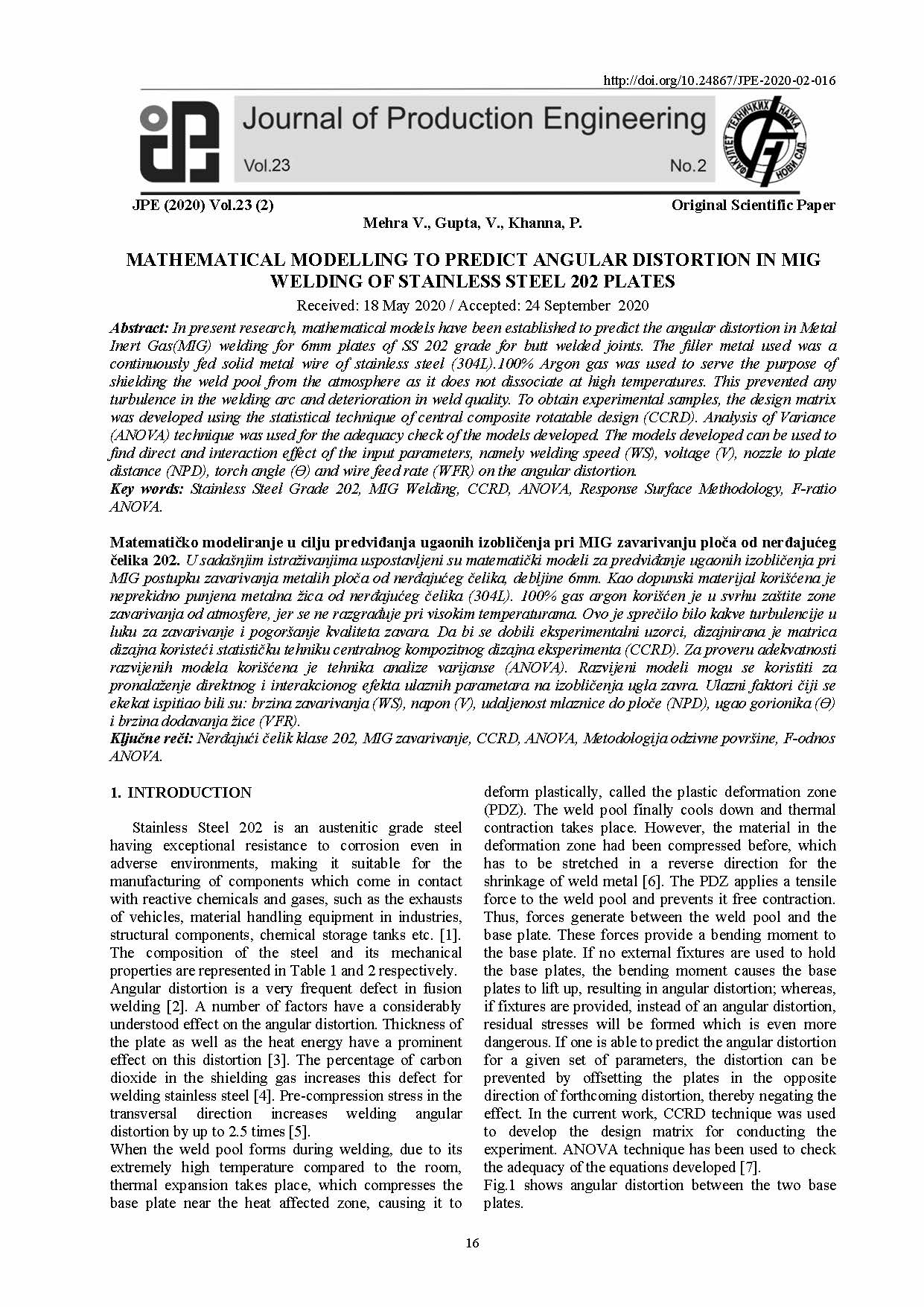Mathematical modelling to predict angular distortion in mig welding of stainless steel 202 plates

Published 2020-06-30
abstract views: 22 // FULL TEXT ARTICLE (PDF): 15
Keywords
- Stainless Steel Grade 202,
- MIG Welding,
- CCRD, ANOVA,
- Response Surface Methodology
How to Cite
Copyright (c) 2023 Journal of Production Engineering

This work is licensed under a Creative Commons Attribution 4.0 International License.
Abstract
In the current research, mathematical models have been established to predict angular distortion in Metal Inert Gas (MIG) welding, specifically for 6mm plates made of SS 202 grade in the case of butt-welded joints. The welding process utilized a continuously fed solid metal wire of stainless steel (304L) as the filler material, and 100% Argon gas served as the shielding gas to protect the weld pool from atmospheric contamination, as Argon does not dissociate at high temperatures. This choice of shielding gas prevented turbulence in the welding arc and maintained weld quality. To obtain experimental samples, a design matrix was developed using the statistical technique of central composite rotatable design (CCRD). The adequacy of the developed models was verified using the Analysis of Variance (ANOVA) technique. These models can be applied to assess the direct and interaction effects of various input parameters, including welding speed (WS), voltage (V), nozzle-to-plate distance (NPD), torch angle (Ɵ), and wire feed rate (WFR) on the angular distortion in the welding process.

